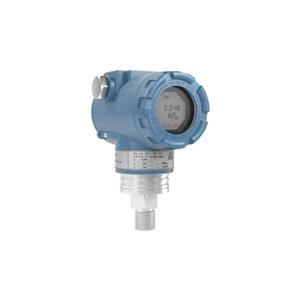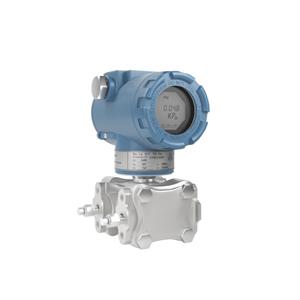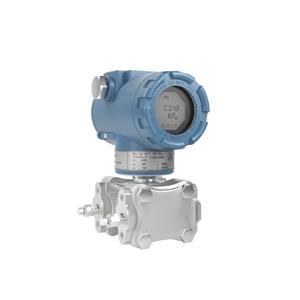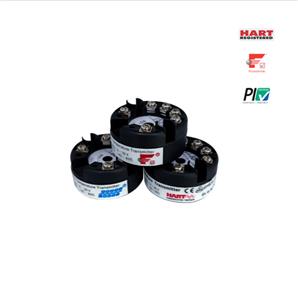How to calibrate industrial pressure transmitter correctly?
Industrial pressure transmitters are very durable and reliable instruments , but they still require regular maintenance and calibration to ensure optimal performance. Each processing plant must determine the correct calibration interval based on historical performance and process-related requirements. If you do not have important historical records or regulatory requirements to guide you in developing calibration procedures, you can start with the following general guidelines.
Directly mounted pressure transmitters installed in a controlled environment under stable conditions should be calibrated every four to six years.
Directly mounted pressure transmitters installed outdoors under stable conditions should be calibrated every one to four years, depending on environmental conditions.
If a remote diaphragm seal is used on the pressure transmitter, the calibration interval should be reduced by a factor of two (ie, reduce the four to six year interval to two to three years). This is because the remote diaphragm seal uses more fill fluid than the direct mount configuration. Therefore, it will be subject to greater mechanical stress due to process or environmental temperature fluctuations. Most remote diaphragms face straight because the diaphragm / membrane is vulnerable to physical damage (dents or scratches), which can cause offset or linearity issues. If the process often encounters significant pressure fluctuations or overpressure events, reducing the calibration interval by a factor of two is a good rule of thumb.
How accurate is it?
What is the maximum allowable error ( MPE ) of your calibration ? Many people mistakenly use the manufacturer's reference accuracy as a calibration target. Unfortunately, this means that their MPE is too tight and the failure rate during calibration is high. In the worst case, if MPE 's tolerances are very strict, their field or laboratory test equipment may not be able to calibrate certain transmitters.
The manufacturer's reference accuracy is based on strictly controlled environmental conditions and is rarely (if any) reused in the factory environment. The long-term stability of the instrument cannot be taken into account using this reference accuracy as a calibration target.
Over time, due to aging and simple wear and tear of mechanical parts, the accuracy of all instruments will decrease slightly. This needs to be considered when establishing an MPE . Generally, unless there is a mitigation situation, it is best to set up a reasonable MPE , which can be achieved by standard field and laboratory test equipment.
The test equipment starts with an accurate pressure source to simulate the input of the transmitter. Use a multimeter to measure the corresponding output of the 4-20 mA transmitter, or use a dedicated device with a digital output smart transmitter (such as HART , Foundation Fieldbus, Profibus or EtherNet/IP ) to measure the corresponding output. As a general recommendation, your reference device should be at least three times more accurate than the pressure transmitter being calibrated.
Perform calibration
After establishing the calibration interval and MPE , the actual calibration procedure can be performed on the pressure transmitter. The best practice recommendations are:
Install the transmitter in a stable fixture with no vibration or movement.
Exercise the sensor or membrane before performing calibration. This means applying pressure and increasing the level to approximately 90 % of the maximum range . For a 150 psi battery, this means pressurizing it to 130–135 psig . Maintain this pressure for 30 seconds, and then vent. Your overall result will be much better than the calibration " cold " .
Perform position zero adjustment (zero the transmitter). This is important because the orientation of the fixture used for calibration may be different from how the transmitter was installed in the process. Skipping this step and failing to correct this error may result in non-compliance.
Start the calibration procedure. Usually, this means a rise of three points ( 0 % / 50 % / 100 %) and then a drop of three points. The 4-20 mA output at 3 points should be 4 mA , 12 mA and 20 mA (or the correct digital value of the smart transmitter). Before proceeding to the next test, each test point should be maintained and stabilized. Generally, this process should not exceed 30 seconds. If you have higher confidence in the performance of the instrument, you can use more points.
Compare the results of the pressure transmitter with the reference device.
Record the results for your record.
Calibration should be carried out in an environment as stable as possible, because temperature and humidity will affect the pressure transmitter under test and the reference pressure. If your calibration results are within the MPE range, do not try to improve the performance of the transmitter.
One mistake that many end users make is that even on new equipment, their pressure transmitters must be adjusted regularly. After the analog / digital conversion, sensor adjustments can correct the digital readings from the sensor. Performing sensor adjustments on new transmitters is actually a single-point calibration under current factory environmental conditions, rather than sticking to the original factory calibration.
The factory calibration of pressure transmitter is carried out in a strictly controlled environment and contains up to 100 test points. Performing sensor trimming on a new pressure transmitter under field conditions will cause the equipment to work at a lower than optimal capacity. Sensor trimming can only be carried out by qualified technicians under the guidance of the manufacturer.




